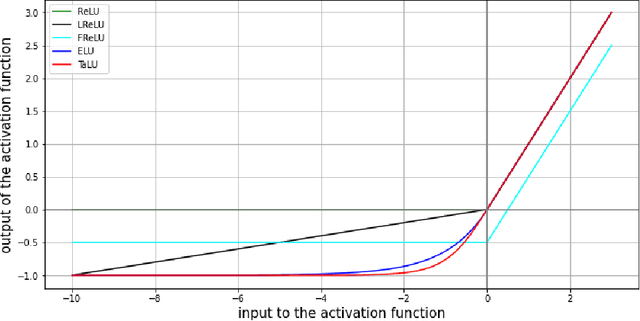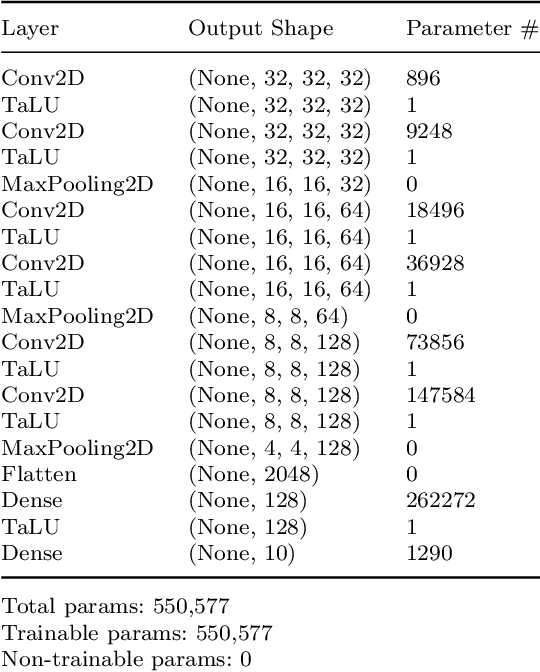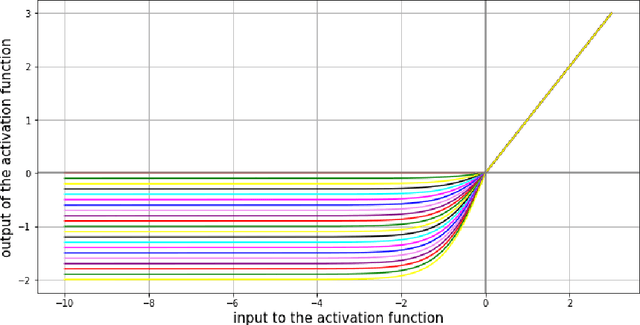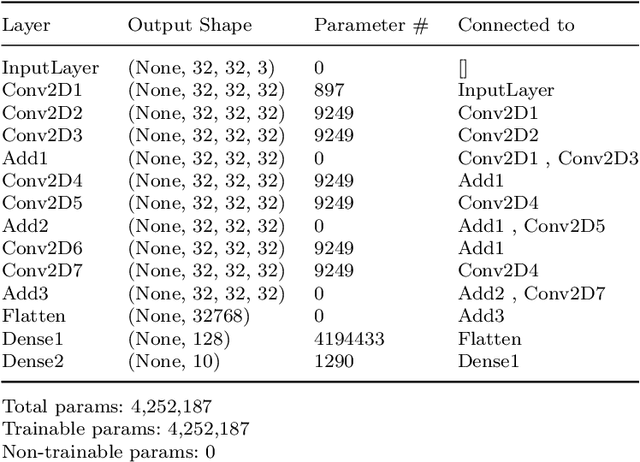Md. Mehedi Hasan
Bangla MedER: Multi-BERT Ensemble Approach for the Recognition of Bangla Medical Entity
Dec 19, 2025Abstract:Medical Entity Recognition (MedER) is an essential NLP task for extracting meaningful entities from the medical corpus. Nowadays, MedER-based research outcomes can remarkably contribute to the development of automated systems in the medical sector, ultimately enhancing patient care and outcomes. While extensive research has been conducted on MedER in English, low-resource languages like Bangla remain underexplored. Our work aims to bridge this gap. For Bangla medical entity recognition, this study first examined a number of transformer models, including BERT, DistilBERT, ELECTRA, and RoBERTa. We also propose a novel Multi-BERT Ensemble approach that outperformed all baseline models with the highest accuracy of 89.58%. Notably, it provides an 11.80% accuracy improvement over the single-layer BERT model, demonstrating its effectiveness for this task. A major challenge in MedER for low-resource languages is the lack of annotated datasets. To address this issue, we developed a high-quality dataset tailored for the Bangla MedER task. The dataset was used to evaluate the effectiveness of our model through multiple performance metrics, demonstrating its robustness and applicability. Our findings highlight the potential of Multi-BERT Ensemble models in improving MedER for Bangla and set the foundation for further advancements in low-resource medical NLP.
Sentra-Guard: A Multilingual Human-AI Framework for Real-Time Defense Against Adversarial LLM Jailbreaks
Oct 26, 2025Abstract:This paper presents a real-time modular defense system named Sentra-Guard. The system detects and mitigates jailbreak and prompt injection attacks targeting large language models (LLMs). The framework uses a hybrid architecture with FAISS-indexed SBERT embedding representations that capture the semantic meaning of prompts, combined with fine-tuned transformer classifiers, which are machine learning models specialized for distinguishing between benign and adversarial language inputs. It identifies adversarial prompts in both direct and obfuscated attack vectors. A core innovation is the classifier-retriever fusion module, which dynamically computes context-aware risk scores that estimate how likely a prompt is to be adversarial based on its content and context. The framework ensures multilingual resilience with a language-agnostic preprocessing layer. This component automatically translates non-English prompts into English for semantic evaluation, enabling consistent detection across over 100 languages. The system includes a HITL feedback loop, where decisions made by the automated system are reviewed by human experts for continual learning and rapid adaptation under adversarial pressure. Sentra-Guard maintains an evolving dual-labeled knowledge base of benign and malicious prompts, enhancing detection reliability and reducing false positives. Evaluation results show a 99.96% detection rate (AUC = 1.00, F1 = 1.00) and an attack success rate (ASR) of only 0.004%. This outperforms leading baselines such as LlamaGuard-2 (1.3%) and OpenAI Moderation (3.7%). Unlike black-box approaches, Sentra-Guard is transparent, fine-tunable, and compatible with diverse LLM backends. Its modular design supports scalable deployment in both commercial and open-source environments. The system establishes a new state-of-the-art in adversarial LLM defense.
CLIN-LLM: A Safety-Constrained Hybrid Framework for Clinical Diagnosis and Treatment Generation
Oct 26, 2025



Abstract:Accurate symptom-to-disease classification and clinically grounded treatment recommendations remain challenging, particularly in heterogeneous patient settings with high diagnostic risk. Existing large language model (LLM)-based systems often lack medical grounding and fail to quantify uncertainty, resulting in unsafe outputs. We propose CLIN-LLM, a safety-constrained hybrid pipeline that integrates multimodal patient encoding, uncertainty-calibrated disease classification, and retrieval-augmented treatment generation. The framework fine-tunes BioBERT on 1,200 clinical cases from the Symptom2Disease dataset and incorporates Focal Loss with Monte Carlo Dropout to enable confidence-aware predictions from free-text symptoms and structured vitals. Low-certainty cases (18%) are automatically flagged for expert review, ensuring human oversight. For treatment generation, CLIN-LLM employs Biomedical Sentence-BERT to retrieve top-k relevant dialogues from the 260,000-sample MedDialog corpus. The retrieved evidence and patient context are fed into a fine-tuned FLAN-T5 model for personalized treatment generation, followed by post-processing with RxNorm for antibiotic stewardship and drug-drug interaction (DDI) screening. CLIN-LLM achieves 98% accuracy and F1 score, outperforming ClinicalBERT by 7.1% (p < 0.001), with 78% top-5 retrieval precision and a clinician-rated validity of 4.2 out of 5. Unsafe antibiotic suggestions are reduced by 67% compared to GPT-5. These results demonstrate CLIN-LLM's robustness, interpretability, and clinical safety alignment. The proposed system provides a deployable, human-in-the-loop decision support framework for resource-limited healthcare environments. Future work includes integrating imaging and lab data, multilingual extensions, and clinical trial validation.
Artificial Neural Networks to Recognize Speakers Division from Continuous Bengali Speech
Apr 18, 2024Abstract:Voice based applications are ruling over the era of automation because speech has a lot of factors that determine a speakers information as well as speech. Modern Automatic Speech Recognition (ASR) is a blessing in the field of Human-Computer Interaction (HCI) for efficient communication among humans and devices using Artificial Intelligence technology. Speech is one of the easiest mediums of communication because it has a lot of identical features for different speakers. Nowadays it is possible to determine speakers and their identity using their speech in terms of speaker recognition. In this paper, we presented a method that will provide a speakers geographical identity in a certain region using continuous Bengali speech. We consider eight different divisions of Bangladesh as the geographical region. We applied the Mel Frequency Cepstral Coefficient (MFCC) and Delta features on an Artificial Neural Network to classify speakers division. We performed some preprocessing tasks like noise reduction and 8-10 second segmentation of raw audio before feature extraction. We used our dataset of more than 45 hours of audio data from 633 individual male and female speakers. We recorded the highest accuracy of 85.44%.
Separation of biocrude produced from hydrothermal liquefaction of faecal sludge without any solvent
Feb 26, 2024Abstract:In this study faecal sludge is used as raw biomass due to its abundance, low cost, and easy availability. After HTL operation, product separation is getting challenging. Current developed studies observed the separation of aqueous and biocrude oil products occurs during the HTL process more popularly with the use of an organic solvent which is quite expensive. Focusing on this critical issue, this study aims to separate the biocrude and aqueous phase without using any solvent by gravity separation technique. From FTIR analysis data it showed that centrifuged at 6000 rpm partial separation of biocrude and aqueous phase (AP) was noticed. however, at 9000 rpm, FTIR analysis showed that biocrude samples included aliphatic hydrocarbons, phenols, and esters where no signs of any carbon chain were found at AP which indicated the products are successfully separated. The separated Crude portion had the higher A-Factor (0.68) and lower C-Factor (0.58) value which indicates the oil quality was immature grade of lower kerogen type II (i.e., moderate oil-prone). This low-cost technique can be economically advantageous for commercial-scale biocrude production.
TaLU: A Hybrid Activation Function Combining Tanh and Rectified Linear Unit to Enhance Neural Networks
May 19, 2023



Abstract:The application of the deep learning model in classification plays an important role in the accurate detection of the target objects. However, the accuracy is affected by the activation function in the hidden and output layer. In this paper, an activation function called TaLU, which is a combination of Tanh and Rectified Linear Units (ReLU), is used to improve the prediction. ReLU activation function is used by many deep learning researchers for its computational efficiency, ease of implementation, intuitive nature, etc. However, it suffers from a dying gradient problem. For instance, when the input is negative, its output is always zero because its gradient is zero. A number of researchers used different approaches to solve this issue. Some of the most notable are LeakyReLU, Softplus, Softsign, ELU, ThresholdedReLU, etc. This research developed TaLU, a modified activation function combining Tanh and ReLU, which mitigates the dying gradient problem of ReLU. The deep learning model with the proposed activation function was tested on MNIST and CIFAR-10, and it outperforms ReLU and some other studied activation functions in terms of accuracy(upto 6% in most cases, when used with Batch Normalization and a reasonable learning rate).
 Add to Chrome
Add to Chrome Add to Firefox
Add to Firefox Add to Edge
Add to Edge